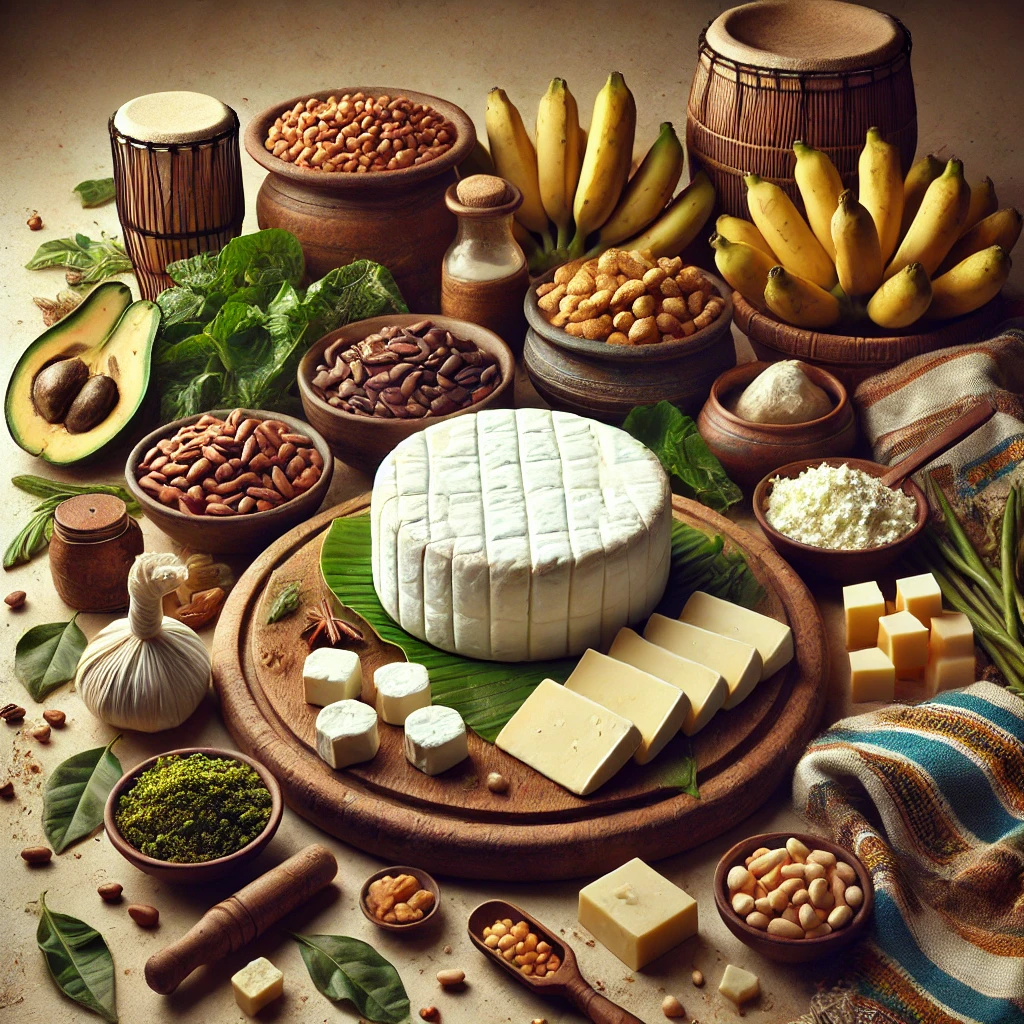In the heart of East Africa, surrounded by Lake Tanganyika, volcanic highlands, and fertile grazing plains, lies Burundi—a nation whose dairy traditions are deeply rooted in pastoral life and cattle culture. While Burundi is not often highlighted in global cheese discussions, one local specialty stands out for its heritage, rarity, and wholesome simplicity: Igikoma.
More than just a cheese, Igikoma reflects Burundi’s farming rhythm, communal food identity, and the long-standing relationship between cattle and cultural pride. Loved in rural areas and increasingly recognized in urban markets, Igikoma is a semi-fermented, creamy yet firm cheese-curd product made from fresh milk and local fermentation techniques.
🧀 What Is Igikoma?
Igikoma is a traditional Burundian dairy product that falls somewhere between curd cheese and lightly fermented yogurt cheese. Its texture and taste resemble:
-
fresh paneer (but softer)
-
chèvre without the tang
-
lightly cultured yogurt cheese
Key Characteristics
| Feature | Description |
|---|---|
| Texture | smooth, soft-firm, curd-like |
| Flavor | mild, creamy, subtle tang |
| Aroma | fresh milk, light fermentation |
| Color | pure white |
| Milk Source | cow’s milk (primarily Ankole breed) |
| Processing | low-salt, gently fermented |
Unlike aged or brined cheeses, Igikoma maintains fresh dairy purity—a taste of the cow, pasture, and Burundian highland air.
🐄 Cultural Roots: Cattle, Milk & Identity
In Burundi, cattle—especially the majestic Ankole long-horn breed—represent wealth, pride, and sustenance. Milk is more than nutrition; it is status, dowry tradition, and ceremonial offering.
Igikoma developed as a way to:
-
make fresh milk last longer
-
create versatile dairy food for families
-
enjoy milk in a solid, shareable form
Where It’s Most Popular
-
rural provinces like Gitega & Ngozi
-
farming households
-
local milk cooperatives
-
village markets
The cheese is often prepared right after morning milking, ensuring maximum freshness.
🥛 How Igikoma Is Made
Production is simple, ancestral, and artisanal—no industrial additives, no heavy aging, no commercial molds.
Traditional Process
-
Fresh cow milk is collected at dawn.
-
Milk is heated gently until curdling begins naturally.
-
Curds are separated from whey using cloth filtering.
-
Curds rest and firm slightly while whey drains.
-
Light fermentation occurs depending on climate and timing.
Why It’s Unique
-
very low salt content
-
natural fermentation
-
no pressing weights
-
no industrial starter cultures
This creates a cheese that is mild, digestible, and beautifully fresh.
🍽 How Burundi Eats Igikoma
Igikoma is a daily dairy staple, not a gourmet rarity. It complements both traditional and modern dishes.
Classic Pairings
| Dish | Why It Works |
|—|—|—|
| Ugali (cassava or maize) | creamy balance to starchy base |
| Plantains | mild vs sweet contrast |
| Fresh kale (isombe) | dairy richness softens leafy greens |
| Millet porridge | smooth texture combination |
| Tea with milk | breakfast comfort pairing |
Community & Social Eating
-
shared at family gatherings
-
given to children as soft protein
-
used in postpartum nutrition due to its softness and purity
🌶 Modern Culinary Uses
Chefs in Bujumbura and regional hotels now experiment with Igikoma in:
-
grilled sandwiches
-
fresh cheese salads
-
veggie wraps
-
chapati rolls
-
herb-seasoned dips
Its neutral profile makes it a chef-friendly canvas for spices, herbs, and sauces.
Flavors That Elevate Igikoma
-
fresh cilantro
-
mild chili
-
garlic yogurt dressing
-
honey drizzle
-
lemon-mint salt
🌍 How Igikoma Compares Globally
| Cheese | Similarity | Difference |
|---|---|---|
| Paneer (India) | soft, fresh, mild | Igikoma lightly tangier |
| Queso Blanco (Latin America) | quick-curd method | Igikoma has softer body |
| Ricotta | creamy & delicate | Igikoma more structured |
| Labneh | tangy yogurt cheese | Igikoma less acidic |
It stands between fresh cheese and cultured milk—delicately balanced.
🌱 Flavor & Texture Profile
Flavor Notes
-
sweet milk
-
faint yogurt tang
-
soft cultured freshness
-
no sharp salt or aging funk
Texture Notes
-
semi-firm yet spoonable
-
moist curd
-
creamy mouthfeel without melting stretch
It is approachable for children, elders, and dairy-sensitive palates due to low salt.
🍷 Beverage Pairings
Burundi does not traditionally pair cheese with wine, but modern dining allows experimentation.
Traditional Pairings
-
warm spiced milk tea
-
sorghum porridge drink
-
local herbal infusions
International Pairings
| Beverage | Why It Works |
|---|---|
| white tea | gentle lift for mellow dairy |
| light Riesling | acidity balances cream |
| sparkling water | palate refresher |
| apple cider | fruit sweetness + dairy softness |
🧊 Storage & Care
Because Igikoma is fresh, storage matters.
Best Practices
-
refrigerate immediately if not eaten same day
-
store in breathable cheese paper or covered bowl
-
consume within 2–4 days
-
avoid freezing (destroys soft curd structure)
Its short shelf life is part of its authenticity.
⭐ Final Summary
Igikoma is not aged, not spiced, not brined—it is pure dairy simplicity. A celebration of Burundi’s pastoral traditions, Igikoma reflects:
-
fresh milk culture
-
community sharing
-
naturally fermented nourishment
In a world filled with bold cheeses and complex rinds, Igikoma offers gentle authenticity—a taste of morning milking, family tables, and East African highland life.
Creamy but structured, mild but meaningful, Igikoma is Burundi’s quiet dairy treasure.
FAQs — Igikoma Cheese
1. Is Igikoma salty?
No—unlike feta or halloumi, it is very lightly salted.
2. What milk is used?
Primarily cow’s milk, especially from traditional Ankole breeds.
3. How is Igikoma eaten?
With plantains, porridge, ugali, tea, and simple regional meals.
4. Does it melt?
No—it softens but does not melt like mozzarella.
5. How long does it last?
Fresh Igikoma is best within 2–4 days due to minimal preservation.


